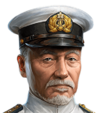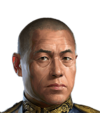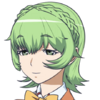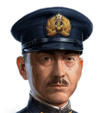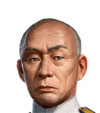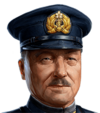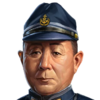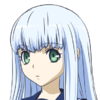Japan

However, several mistakes and oversights during the war resulted in their near-annihilation by the United States Navy. Design flaws — typically the results of cramming as much weaponry as possible into a limited displacement — caused certain ships to be top-heavy and unstable. While concentrating air assets into a single, cohesive force was as effective as it was revolutionary, their carriers were inadequately protected from counterattacks due to lack of radar, faulty design and configuration of anti-aircraft guns, as well as ineffective fire control systems. The surprise attack on Pearl Harbor, Hawaii of 7 December 1941 was a tactical victory but a strategic error, bringing into the war a nation that — while initially under-prepared and as yet unwilling to go to war — had near-limitless resources and unmatched production capabilities. Compounding the error, little to none of the support facilities based in Pearl Harbor — naval repair yards, fuel depots, logistics infrastructure — were attacked, allowing the United States to quickly recover and strike back with a vengeance from their primary naval base in the Pacific. In contrast, Japan did not have the capabilities to replace their losses as quickly, were incredibly dependent on imports — indeed, reducing that dependency was actually one of the major reasons for Japan's expansionist desires — and their unprotected shipping lines due to under-investment in anti-submarine and anti-aircraft warfare allowed the United States Navy to slowly starve Japan into submission.
Japanese ships tend to have great variations in design; each class encountered is likely to have noticeably different handling characteristics from the previous tier, a result of the IJN constantly experimenting with or influenced by different designs and doctrines. They boast consistently superior torpedoes, accurate and long-range guns with high alpha damage, and outstanding concealment and mobility; however, they suffer from inferior survivability and anti-aircraft defenses. Their play style is very similar to the "decisive battle" doctrine that dominated IJN tactics: strike fast and strike hard with precision at targets of importance and/or opportunity, but every hit taken in exchange will be painfully felt.
Destroyers
Gameplay
Japanese destroyers rely on remaining unspotted and depend heavily on making good use of their torpedoes; the tech tree splits at Tier IV after Isokaze, with one line focusing on torpedoes and the other on gunnery.
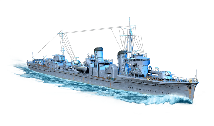
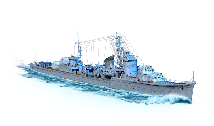
Cruisers
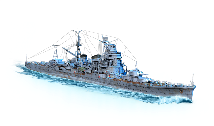
Gameplay
Japanese cruisers tend to have fewer guns housed in slow-turning turrets, coupled with excellent maneuverability and concealment values, and virtually all of them are equipped with a complement of torpedoes that are on par with their destroyer cousins - at the higher tiers, these torpedo tubes will often be located aft of the vessel hampering firing arcs. As such, do not be fooled if a Japanese cruiser starts turning away mid-fight; they may have very likely just launched a spread of torpedoes in your direction. From Tier IV's Furutaka onwards, they are equipped with accurate, powerful guns that, while lacking in rate of fire, have reasonable shell arcs and velocity and are able to reliably penetrate or set their enemies on fire; their High Explosive![]() shells have some of the highest chances among all cruisers in World of Warships: Legends to set targets on fire. Their anti-aircraft suites are sufficient for self-defense, but captains will be hard-pressed to protect their teammates.
shells have some of the highest chances among all cruisers in World of Warships: Legends to set targets on fire. Their anti-aircraft suites are sufficient for self-defense, but captains will be hard-pressed to protect their teammates.
Battleships
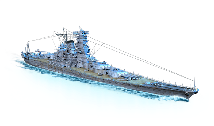
Gameplay
Japanese battleships[7] were somewhat restricted by the Washington Naval Treaty, forcing them to resort to unusual — but often innovative — designs in outfitting their battleships. This resulted in battleships that have widely varying characteristics: the fast and agile Kongō; and the well-balanced Nagato; culminating in the crown of their battleship tree, the formidable Yamato. Japanese battleships often have the highest caliber guns with the longest ranges of their tier, allowing them to rain destruction upon their enemies with impunity. Many of them have good speeds and agility that belies their size and class, but their armor protection frequently lags behind their counterparts of other nations - it tends to be more evenly spread out around the entire ship, so while their citadels may not be as well-protected, at least until Yamato, they have few obvious weak spots. Like their cruiser cousins, their anti-aircraft firepower is sufficient for self-defense, but captains will want cruiser support to ward off more concentrated aerial assaults.
Aircraft Carriers
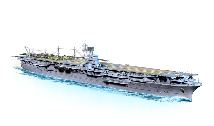
Gameplay
Japanese aircraft carriers have good maneuverability and concealment values, allowing them to re-position and evade enemies exceptionally well. IJN carriers have HE bombers and the torpedo squadrons carry the best air-borne torpedoes in the game which allow players to drop their load at safer distances from anti-air. Japanese carriers also have planes with the lowest health pools resulting in lower survivability when engaging ships with high anti-air capabilities. Poor or reckless endangerment of their squadrons will end up in the carrier running out of aircraft and thus being of limited use to the team. Hakuryū — or G15 Taiho Mod. 2 in official designation — currently represents the pinnacle of what IJN carriers might have achieved, as it can theoretically destroy even the toughest battleships with sheer squadron numbers alone.
 Japanese Cruisers
Japanese Cruisers
 Commanders
Commanders
Jack of All Trades
The following commanders have skills and traits which can be utilized across each of the different ship classes however they are not specialized in any particular one.
Cruiser Commanders
These commanders have skills that not only suit cruisers, but will sometimes only have an impact on that class of ship. Cruisers type skills often have an emphasis on long range support, HE fire chance and sonar/hydroacoustic search modifiers.
Destroyer Commanders
With skills focusing on speed, stealth, torpedoes and smokescreens to name a few examples, the following commanders are best used on your destroyers.
Battleship Commanders
Featuring skills that can improve your secondary batteries, repair consumables, accuracy and armor penetration as just a handful of examples, these commanders are best suited for usage on your battleships.
Aircraft Carrier Commanders
These commanders have skills that focus on aircraft carriers' performance, as well as on their planes' such as their speed, recovery time, bomb and torpedo damage, and more.
References
- ↑ Imperial Japanese Navy (Wikipedia) and Naval history of Japan (Wikipedia) and Ships of the Imperial Japanese Navy (Wikipedia)
- ↑ Battles of the Imperial Japanese Navy (Wikipedia)
- ↑ Imperial Japanese Navy in World War II (Wikipedia) and Japanese Navy ships and war vessels in World War II (Wikipedia)
- ↑ Aircraft of the Imperial Japanese Navy (Wikipedia)
- ↑ Cruiser classes of the Imperial Japanese Navy (Wikipedia)
- ↑ Destroyers of Japan - (Wikipedia) and Japanese destroyers of World War II (Wikipedia)
- ↑ Battleships of Japan (Wikipedia)























































































